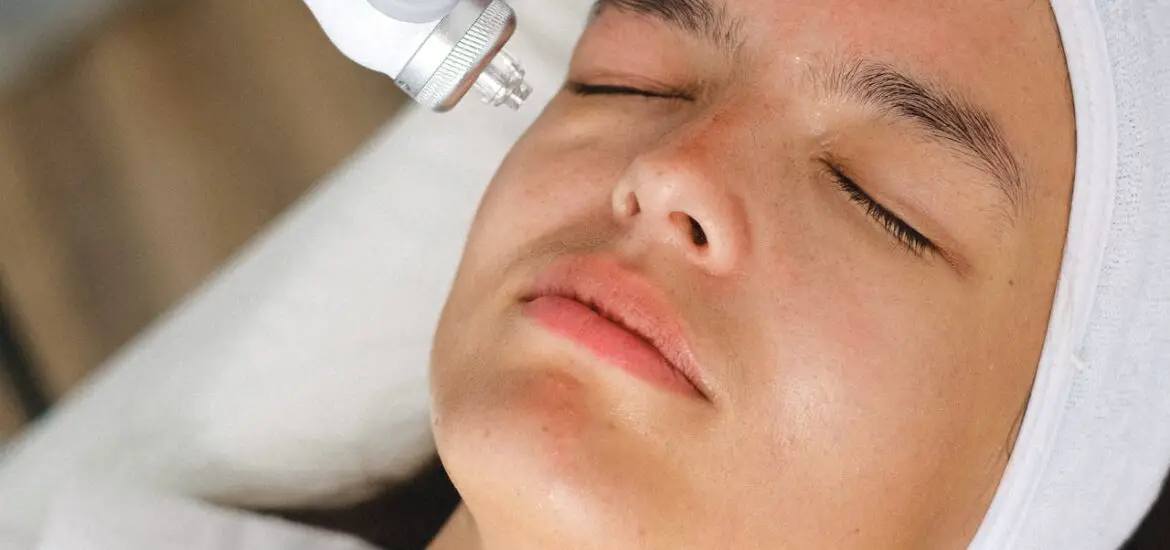Experiencing burnt skin after laser treatment? This guide provides you with essential information on how to effectively manage and hasten the healing process.

Table of Contents
Understanding Burnt Skin After Laser Treatment
Laser treatment is a medical procedure using focused light beams to treat various skin issues, such as hair removal, acne scars, and age spots. Despite being largely safe, the intensity of the laser can occasionally cause skin burns, especially if not adjusted correctly for individual skin types and colors.
These burns can range from mild (first-degree) to severe (third-degree), affecting different layers of the skin. Symptoms include redness, swelling, and pain. In more severe cases, blistering, peeling, and discoloration may occur. Understanding the type of burn and its severity is crucial for effective treatment and healing.
Immediate Steps Post-Treatment
Following a laser treatment, if you notice symptoms of a burn, immediate action is essential. Start by gently applying a cool compress or cloth soaked in cool water to the affected area for intervals of 10-15 minutes. This helps to reduce inflammation and relieve pain.
Avoid using ice or extremely cold water, as this can cause further tissue damage. Do not apply any butter, oil, or ointments, as these can trap heat and worsen the burn.
If there are blisters, do not puncture them, as they protect the underlying skin from infection. Gently covering the area with a clean, dry, non-stick bandage can protect the skin and reduce the risk of infection.
Care and Management of Burnt Skin After Laser Treatment
Effective skin care following a burn is vital for healing. Gently cleanse the area daily with lukewarm water and mild soap, patting it dry with a soft towel.
Avoid using hot water, harsh soaps, or scrubbing motions. Apply an aloe vera gel or a moisturizer free from alcohol, fragrances, and dyes to keep the skin hydrated and soothe irritation.
You can get this Cetaphil Moisturizing Cream from Walmart.
Wearing loose, soft clothing over the burn can prevent irritation and protect the skin. Avoid exposing the burn to direct sunlight, as UV rays can exacerbate the damage.
If the burn is on a commonly moved area, like a joint, try to limit movement to prevent skin stretching and further irritation.
Medication and Treatments of Burnt Skin After Laser Treatment
For pain management, over-the-counter pain relievers like acetaminophen or ibuprofen can be used. In cases of more severe burns, your healthcare provider may prescribe a topical antibiotic to prevent infection or a steroid cream to reduce inflammation. It’s important to apply these as directed, typically once or twice a day, in a thin layer over the affected area.
Do not use over-the-counter antibiotic ointments without consulting a healthcare provider, as some ingredients may worsen the burn. If the pain is severe, does not improve, or if you notice signs of infection (increased redness, swelling, pus, or fever), consult your healthcare provider immediately.
How Long Does It Take Laser Burns to Heal?
The healing time for laser burns varies based on the burn’s severity. First-degree burns typically heal within 3-6 days. Second-degree burns, which may cause blisters and more intense redness, can take 1-3 weeks to heal. Third-degree burns, the most severe, may require several months and specialized treatment.
It’s crucial to keep the area clean and moisturized and avoid picking at peeling skin or bursting blisters, as this can increase healing time and risk of infection. Regularly inspect the area for signs of healing or any indications of infection, which necessitates medical attention.
When to Seek Medical Attention for Burnt Skin After Laser Treatment
Medical attention should be sought if the burn is deep or covers a large area, particularly on the face, hands, feet, or over major joints. If you experience severe pain, signs of infection (such as pus, increased redness or swelling, fever), or if the burn does not show signs of healing within a few days, it’s crucial to see a healthcare provider.
In cases of third-degree burns, where the skin appears white, charred, or leathery, immediate medical care is necessary. These types of burns may damage nerve endings and require professional treatment to heal properly and minimize scarring.
Long-Term Care of Burnt Skin After Laser Treatment
Once the burn has healed, ongoing skin care is important to maintain skin health and appearance. Continue to protect the skin from the sun using a broad-spectrum sunscreen with an SPF of 30 or higher. Reapply sunscreen every two hours, or more often if swimming or sweating. Use gentle, hypoallergenic skin care products, and avoid those with alcohol, fragrances, or other irritants.
You can get this Cetaphil Sheer Mineral Sunscreen Lotion from Walmart.
If scarring occurs, treatments like silicone gel sheets, pressure garments, or laser therapy may be recommended by a dermatologist. Regular skin examinations are also important to monitor for any long-term changes or complications from the burn.

